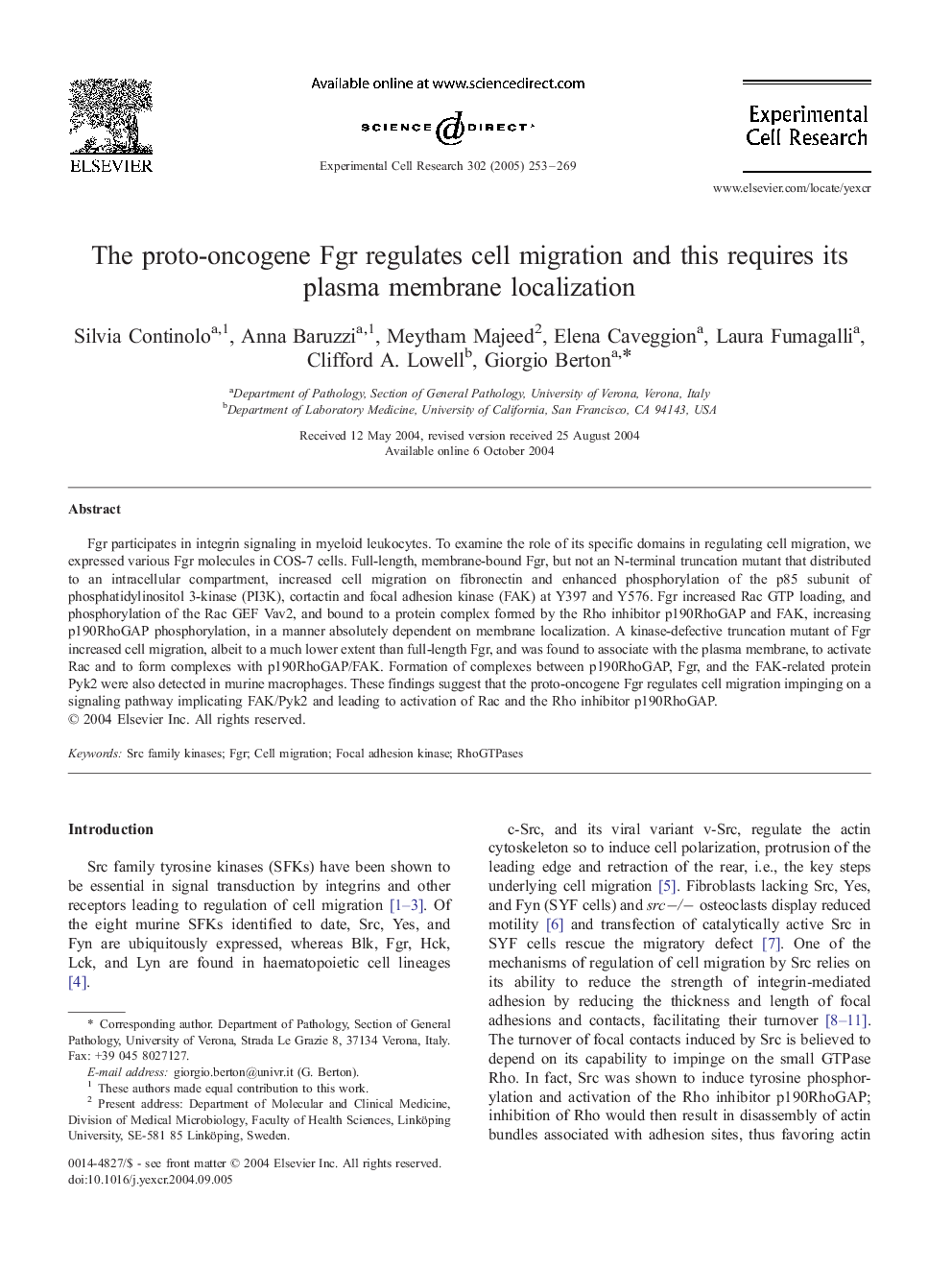| Article ID | Journal | Published Year | Pages | File Type |
|---|---|---|---|---|
| 10905862 | Experimental Cell Research | 2005 | 17 Pages |
Abstract
Fgr participates in integrin signaling in myeloid leukocytes. To examine the role of its specific domains in regulating cell migration, we expressed various Fgr molecules in COS-7 cells. Full-length, membrane-bound Fgr, but not an N-terminal truncation mutant that distributed to an intracellular compartment, increased cell migration on fibronectin and enhanced phosphorylation of the p85 subunit of phosphatidylinositol 3-kinase (PI3K), cortactin and focal adhesion kinase (FAK) at Y397 and Y576. Fgr increased Rac GTP loading, and phosphorylation of the Rac GEF Vav2, and bound to a protein complex formed by the Rho inhibitor p190RhoGAP and FAK, increasing p190RhoGAP phosphorylation, in a manner absolutely dependent on membrane localization. A kinase-defective truncation mutant of Fgr increased cell migration, albeit to a much lower extent than full-length Fgr, and was found to associate with the plasma membrane, to activate Rac and to form complexes with p190RhoGAP/FAK. Formation of complexes between p190RhoGAP, Fgr, and the FAK-related protein Pyk2 were also detected in murine macrophages. These findings suggest that the proto-oncogene Fgr regulates cell migration impinging on a signaling pathway implicating FAK/Pyk2 and leading to activation of Rac and the Rho inhibitor p190RhoGAP.
Related Topics
Life Sciences
Biochemistry, Genetics and Molecular Biology
Cancer Research
Authors
Silvia Continolo, Anna Baruzzi, Meytham Majeed, Elena Caveggion, Laura Fumagalli, Clifford A. Lowell, Giorgio Berton,
